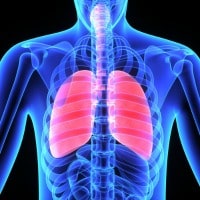European research published in the American Journal of Respiratory and Critical Care Medicine by the American Thoracic Society states that since women are living longer these days, which means years beyond menopause, it is important for them to maintain their respiratory health long after what is called the menopausal transition. The report, “Menopause is Associated with Accelerated Lung Function Decline,” has as its lead author, Kai Triebner, MSc, who is also a PhD candidate in epidemiology at Norway’s University of Bergen.
The findings were that forced vital capacity (FVC) and forced expiratory volume for one second (FEV1) declined in women going through that transition and after menopause, more than would be expected by normal aging. FVC is the measure of lung size, and FEVI is the measure of how much air is forcefully exhaled in one second.
The decline in FVC was the same as when smoking 20 cigarettes a day over 10 years, and the decline in FEV1 akin to smoking 20 cigarettes a day for 2 years. This may cause an increase in reduced work capacity, a shortness of breath, and fatigue. A few women may even develop respiratory failure.
Data was analyzed from 1,438 women enrolled in a European Respiratory Health Survey ranging from 25 to 48 years old, and were not menopausal when the study started. By the time they were followed for 20 years, most had gone through the menopausal transition or were postmenopausal. The researchers believe this is the first longitudinal population-based study of menopause and lung function.
Findings also were noted of age, height, weight, smoking history, and education. Those who currently smoked or had done so in the past showed a steeper decline. One explanation could be that menopause causes hormonal changes that also have been linked to systemic inflammation, which is associated with the decline of lung function. Additionally, those hormonal changes have also been implicated in osteoporosis, because the shortening of the chest vertebrae height may limit the amount of air a person can inhale.
The American Thoracic Society is the leading medical association in the world which is dedicated to pulmonary, critical care, and sleep medicine. The 15,000 members prevent and fight respiratory disease throughout the globe with education, research, advocacy and patient care.
The American Journal of Respiratory and Critical Care Medicine is published by the American Thoracic Society and is the highest ranked journal in its field. It publishes innovative science reviews, statements, and guidelines.




